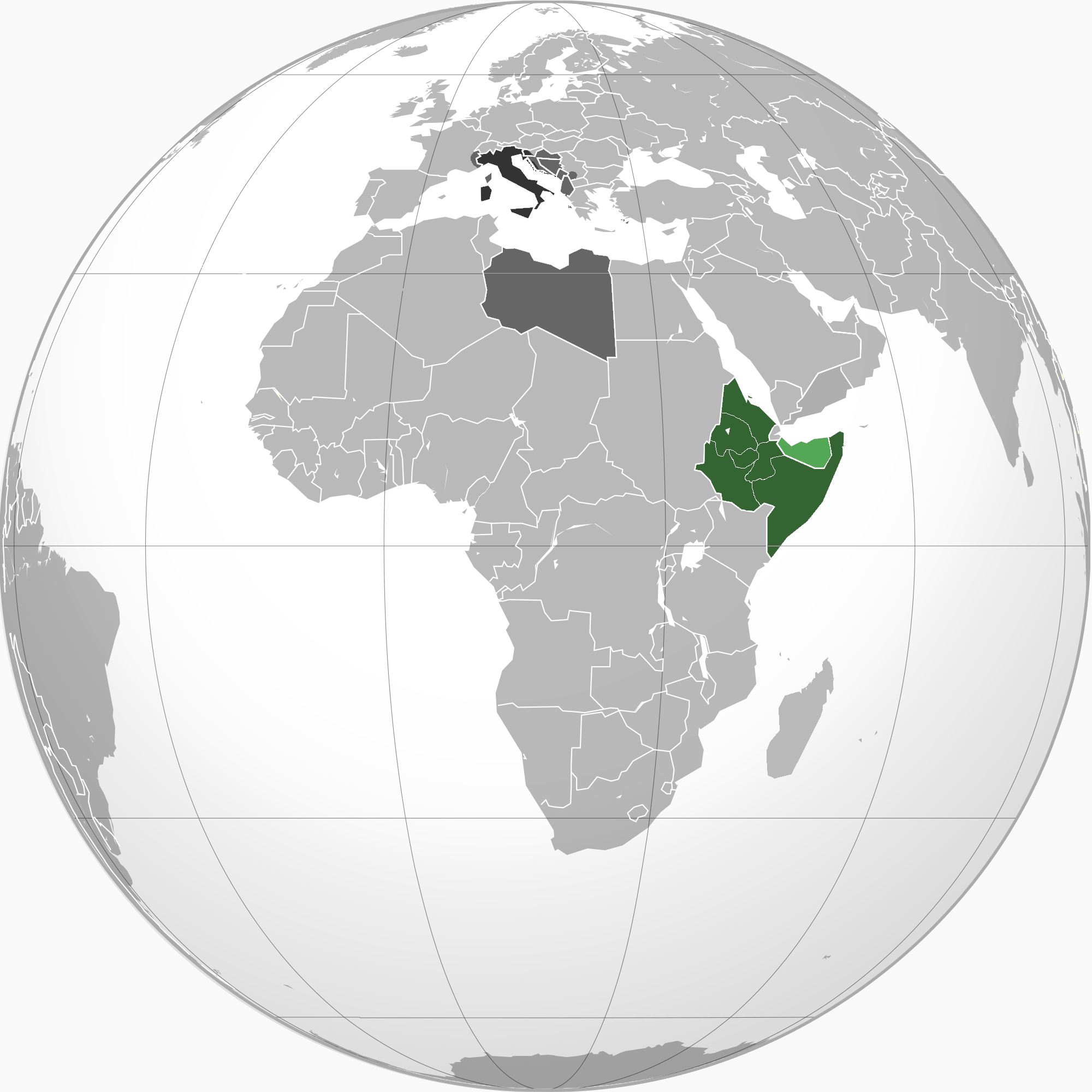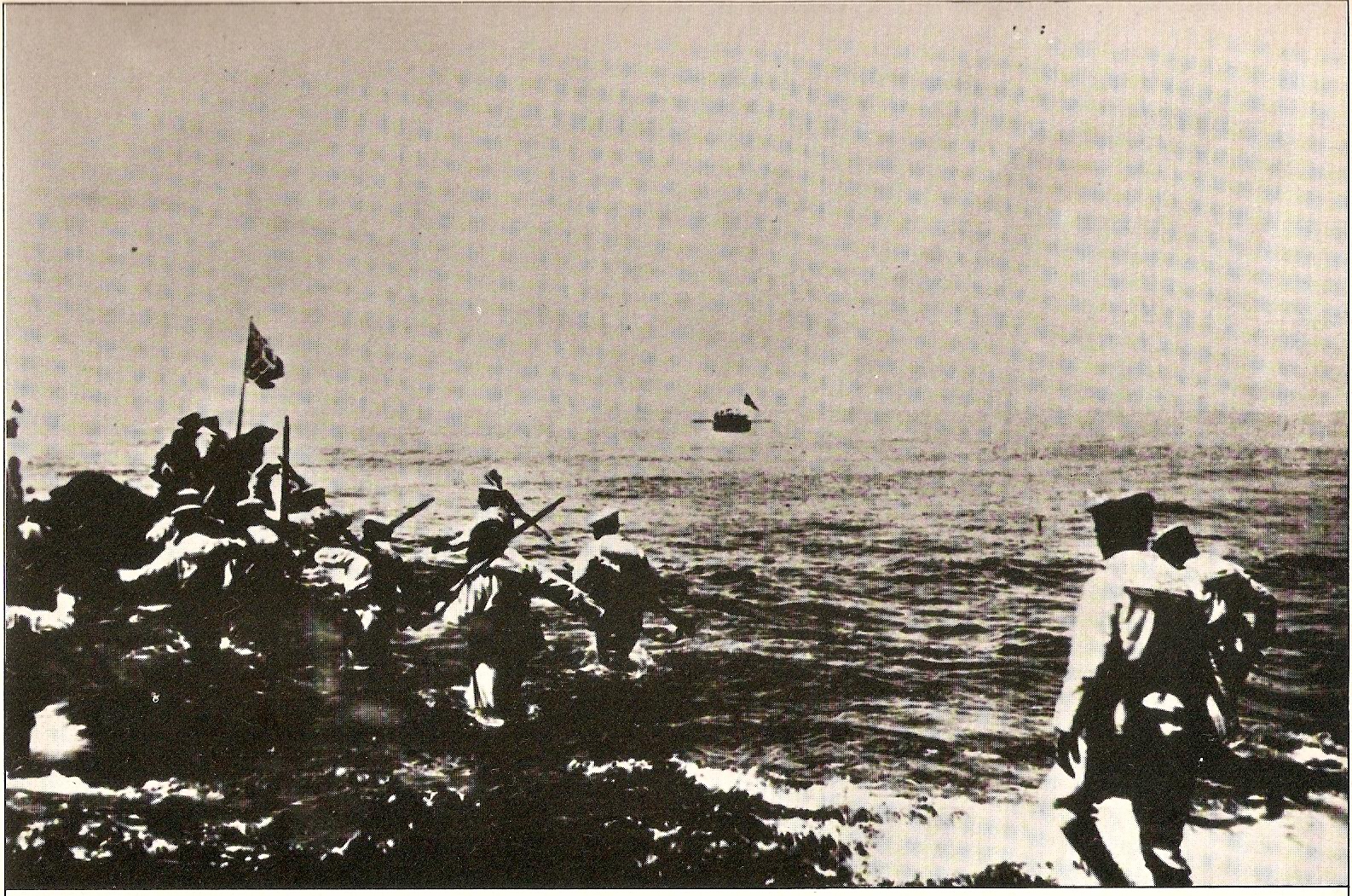The Derna,
a cargo ship, departed from Turkey in September 1911. Its cargo hold was filled
with 20,000 rifles, 2 million rounds of ammunition and machineguns, destined to
the Ottoman-Libyan port of Tripoli and to be distributed amongst loyal Libyan
tribesmen. On 24 September, Italy caught wind of the ship’s journey and issued
a warning to the Ottomans that “sending war materials to Tripoli was an obvious
threat to the status quo” and endangered the Italian community in Libya. The
ship started unloading its cargo at Tripoli harbor on the 26th of
September. Infuriated, the Italian government issued a 24-hour ultimatum to the
Ottoman empire on the 28th: the regions of Tripolitania and Cyrenaica
are to fall under Italian jurisdiction and military occupation or else war
would be declared.
The Ottomans gave a reasonable and conciliatory reply but
Italy would have none of it. On the 29th of September, Italy
declared war on Ottoman Libya, a decision described by the Italian prime
minister Giovanni Giolitti as fulfilling una fatalia storica – a history
destiny.
 |
| The Ottoman-Italian war (photo from Commons) |
Prelude
But why
Libya? At the time, Libya (formally called the vilayat of Tripolitania)
was a neglected region in the Ottoman empire. It had neither roads nor railways,
and produced (in the terms of a contemporary European writer) “products of
primitive husbandry” such as livestock and dates. The farming industry barely
managed to produce food to feed the whole population. What reasons did the
Italians have to be in Libya?
To answer
this question, we must go back to the time when Italy was born without Rome nor
Venice, in August 1863. The Opinione paper of Turin had warned that
“If Egypt and with it the Suez Canal falls to the British, and if Tunis falls to the French and if Austria expands into Albania, we will soon find ourselves without breathing space in the dead centre of the Mediterranean. “
 |
| The Italian colonial empire, by 1940. |
Even
earlier, in 1838, Giuseppe Mazzini, who helped unify Italy, declared that North
Africa belongs to Italy. In the 19th century, Italy was a relatively
new & poor country that was seemingly surrounded by Great Powers on all
three sides; the French, the Austrian Empire, the Ottomans and the British.
Determined to become a Great Power in her own right, in the 1860s and 1870s,
Italy began to court Tunisia, Rome’s first African colony and then still an
Ottoman province. With a large Italian population of 25,000 by 1881, it seemed
that Tunisia would be easy-picking for Italy. Unfortunately, the Bey (governor)
of Tunisia accepted French rule in May 1881, dealing a blow to Italian pride
and sending the country’s politicians panicking.
France’s
interference in Tunisia inadvertedly lead to Italy entering the Scramble For
Africa, acquiring the unpromising but strategic regions of Somalia and Eritrea
in 1889. Italy soon set its eyes on Ottoman Libya, compensation in their view
for Tunisia. Control of Libya provided strategic access over the central
Mediterranean, and territory close to the lucrative Suez Canal trade. In
Italy’s view, they had to claim Libya to counter French (or others) influence
in the Mediterranean. Mussolini later commented,
“For others, the Mediterranean is just a route. For us, it is life itself.”
From the
1880s until 1911, Italy pursued a vague policy of “peaceful penetration”;
establishing Italian schools, encouraging the migration of Italian farmers in
Cyrenaica (eastern Libya), setting up of Italian banks and funding mineral
prospecting expeditions. The Italian public was largely supportive of the
movement; as far back as 1889, Italian nationalists, industrialists and the
Catholic Church had called for the colonial expansion, arguing that it would
combat Italy’s alleged overpopulation and mass emigration to the United States.
“To emigrate is servile,' Italians were told, 'but to conquer colonies is a worthy task for a free and noble people”
Nationalist newspapers depicted Libya as a
good source of grains and olives as well as possessing lucrative trade
routes. Italian explorers ventured to
Libya, calling it Italy’s Fourth Shore, and described the potential
wealth of the unexploited countryside and the seemingly endless green fields of
Cyrenaica (in 1911, a writer went as far as to say that 1/4th of the
country could be cultivated using irrigation).
But why not
simply invade? Why go through this decades-long process? The reason was that
the Italians feared an invasion of Ottoman Libya would result in a greater
European war, with perhaps the Austrians making unacceptable gains in the
Balkans, and potential backlash with France or other European powers. As a
result, the Italian diplomatic goal was to secure assurances and guarantees
from Europe’s powers. In the 1900s, Italy acquired assurances from Britain,
Austria & Germany (both being Allies), Russia and the United States. Year
after year, the Italians waited for their opportunity to strike. In 1911, in
the aftermath of the Agadiz crisis that saw France gain even more territory in
North Africa, Italy decided to act, scheduling an invasion in the autumn, when
the sea was calmest.
Italy needed
a casus belli and it found one. In 1908, two Italians (one of them a priest)
were murdered in Tripoli, and the Ottoman investigation proved inconclusive.
The Italian media hunched onto the story, claiming that Italian lives and
property were in danger in Libya and campaigned furiously for an occupation.
With the backing of the majority of the public (minus the Socialists, who
rioted against the idea of an “imperialist invasion”, interestingly enough
Mussolini was amongst the rioters and was jailed for his criticism of the
invasion) and the Catholic Church (who praised the “crusading spirits” of the
masses) , the invasion seemed in place.
War & Peace:
 |
| Italian landing at Tripoli, October 1911 |
After the Derna
incident, four Italian battleships disembarked from Italy on the 1st
of October and anchored the next day outside of Tripoli. It was only at 3:15pm
on the 3rd of October that the ships began bombarding the three
Ottoman forts of Tripoli. On the 5th , 900 marines landed and
captured the badly-damaged forts. The Turkish commander and his depleted
garrison, seeking to spare the city from bombardment, withdrew from the city. By nightfall, around 1,700 more marines occupied the town of Tripoli. The
Ottoman garrison, numbering less than 5,000, regrouped with Libyan tribesmen
inland whilst the Italian vanguard awaited the arrival of the main
expeditionary force, which arrived a week later.
Italy had
hoped the Turks would seek negotiations after the capture of Tripoli but they
had no intention to. The Italians were surprised to face stiff resistance from
the native Libyans whom they thought would welcome them as liberators. East of
Tripoli, the Italians were almost overwhelmed by a combined Libyan-Turkish
assault at Henni on the 23rd of October. Meanwhile in Cyrenaica, Italian
amphibious landings and shelling resulted in the capture of Tobruk, Derna and
Homs on the 4th, 18th and 21st of October.
On
18 October, another Italian battle fleet (consisting of 7 battle cruisers and
20 transport ships) anchored outside Benghazi and issued a 24-hour ultimatum,
demanding the town’s surrender. The 280-man garrison defended the town against
hopeless odds. After the ultimatum expired, the fleet shelled the city to the
ground, destroying the city’s Grand Mosque and damaging the Franciscan mission
as well as the British and Italian consulates, all of which were packed with
refugees. Later that day, the Turkish garrison surrendered, but the Italian
occupiers faced unexpected resistance from the inhabitants of the suburbs. The
Turko-Libyan forces withdrew from the town in the next few days.
 |
| Italian battery bombardment of Benghazi |
By the end
of October 1911, Italy controlled five beachheads on the Libyan coast and had
deployed 34,000 men, 6,300 horses, 1,050
wagons, 145 warships amongst others. The war was the first to see the deployment
of new technologies such as machineguns, radio-telegraph and motor-transport as
well as aeroplanes in battle.
The town of
Tripoli rioted against the Italians at the end of October but was brutally
suppressed. On 5 November 1911, the Italian King Victor Emmanuel issued a royal
decree, bringing Tripolitania and Cyrenaica under the Italian Crown. In what is
comparable to George Bush’s premature “Mission Accomplished” declaration in
2003, so too was King Victor’s. It would take twenty years before Libyan
resistance was effectively subdued.
The invasion
was a disaster primarily because it failed to account for the actions of the
native Libyan population. The Italians had hoped the Libyans would welcome them
as saviours from the corrupt Turks or at the very least to stay neutral in the
war. However, the Italians failed to recognize that the Libyans and the
Ottomans were bound in religion. Both people were Muslim and to the Libyans,
they were fighting against an invading Christian army akin to the Crusaders. This
blunder lead to the war being dragged out for a year, much to the relief of the
Turks who were also surprised by the support they were given.
Due to Italian naval supremacy and Britain’s
reluctance to allow Ottoman troops to march through Egypt, reinforcements could
not be directly sent. However, colonels and generals (such as a young Mustafa
Kemal) smuggled their way through Egypt into Libya. Arms were smuggled from
Greece and French Tunisia also. The
influential Sanussi tribesmen of Cyrenaica’s desert rallied armies in support
of the Ottomans, though with poorly armed weaponry.
 |
| A young Mustafa Kamel, in Derna (1912) |
In 1912, a
stalemate was reached. The Italians in Tripoli had managed to extend their
radius of control by a few miles, the port of Misrata was captured in February.
Italian troops were deployed to the Tunisian frontier to cease the arms
smuggling. After 11 months, none of the five beach-heads had linked up. The
Italian army dugged in in Derna were besieged by a 10,000-man irregular
army.
 |
| The signing of the treaty of Lausanne |
The war was
demoralizing for Italy (who expected it to be a walk-in-the-park) but worse for
the Turks, who faced unrest in the Balkans and other regions.
In July 1912, the
Turks and Italians quietly met in Lausanne on the shores of Lake Geneva. It was
only on 17 October 1912 that both parties declared peace, much to the surprise
of Libyans who felt betrayed. The treaty
they signed was vague; the Ottoman Sultan was to declare Tripolitania and
Cyrenaica as independent and that Libyans were now Italian subjects. In return,
the Italians withdrew from the Dodecanese islands in the Aegean Sea. The Sultan
also retained the power to appoint the grand religious cleric of Tripoli,
allowing the Ottomans to retain religious control over the region.
For the
Italians, it was a cheap and fairly easy victory. The Ottomans could not afford
to continue the war. However, Libyan irregulars continued to fight on. With the
Italians only in control of the coastal settlements, Libya’s interior remained
hostile tribal territory. To the Ottomans, their fight ended. To the Libyans,
their fight has just begun.
References:
- A History of Libya by John Wright, pages 101-114.
- The Making of Modern Libya: State Formation, Colonization, and Resistance by Ali Abdullatif Ahmida, pages 104-105
- Photos from Wikimedia Commons



